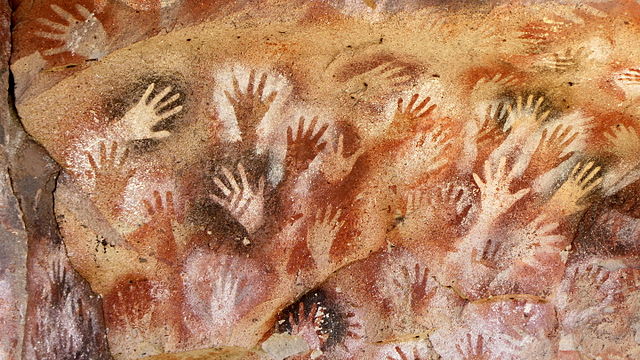Argentina, officially the Argentine Republic, is a country in the southern half of South America. Argentina covers an area of 2,780,400 km2 (1,073,500 sq mi), making it the second-largest country in South America after Brazil, the fourth-largest country in the Americas, and the eighth-largest country in the world. It shares the bulk of the Southern Cone with Chile to the west, and is also bordered by Bolivia and Paraguay to the north, Brazil to the northeast, Uruguay and the South Atlantic Ocean to the east, and the Drake Passage to the south. Argentina is a federal state subdivided into twenty-three provinces, and one autonomous city, which is the federal capital and largest city of the nation, Buenos Aires. The provinces and the capital have their own constitutions, but exist under a federal system. Argentina claims sovereignty over the Falkland Islands, South Georgia and the South Sandwich Islands, the Southern Patagonian Ice Field, and a part of Antarctica.

The Cave of the Hands in Santa Cruz province
The surrender of Beresford to Santiago de Liniers during the British invasions of the Río de la Plata
Portrait of General José de San Martin, "the Liberator of Argentina, Chile and Peru"
People gathered in front of the Buenos Aires Cabildo during the May Revolution
South America is a continent entirely in the Western Hemisphere and mostly in the Southern Hemisphere, with a considerably smaller portion in the Northern Hemisphere. It can also be described as the southern subregion of the Americas.
Scheme for geographic regions and subregions used by the United Nations Statistics Division
A composite relief image of South America
The Gran Roque village, the largest settlement of the Los Roques Archipelago, Venezuela
The prehistoric Cueva de las Manos, or "Cave of the Hands", in Argentina








